Boxelder Maple (Acer negundo)
The Boxelder Maple is native to the majority of central and eastern United States (including Minnesota) and scattered areas of western United States and Mexico.
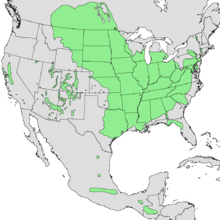
The Boxelder Maple is a medium-sized, fast growing tree that is generally short lived with a lifespan typically of 75 years and at a maximum 100 years. It can tolerate extended periods of time in flooded conditions and therefore it is commonly found on the shorelines of bodies of water like lakes, rivers, and trees. This tree can grow about 1 inch in diameter each year before maturity (15-20 years) and up to 2 feet in height. It tends to reach a heigh of 35-60 feet with a width also from 35-60 feet meaning it is a generally full looking tree. This tree is not generally used in landscaping, but often grows in abandoned lots or fields in urban settings due to its ability to survive in poorer soil conditions.
https://extension.umn.edu/trees-and-shrubs/boxelder
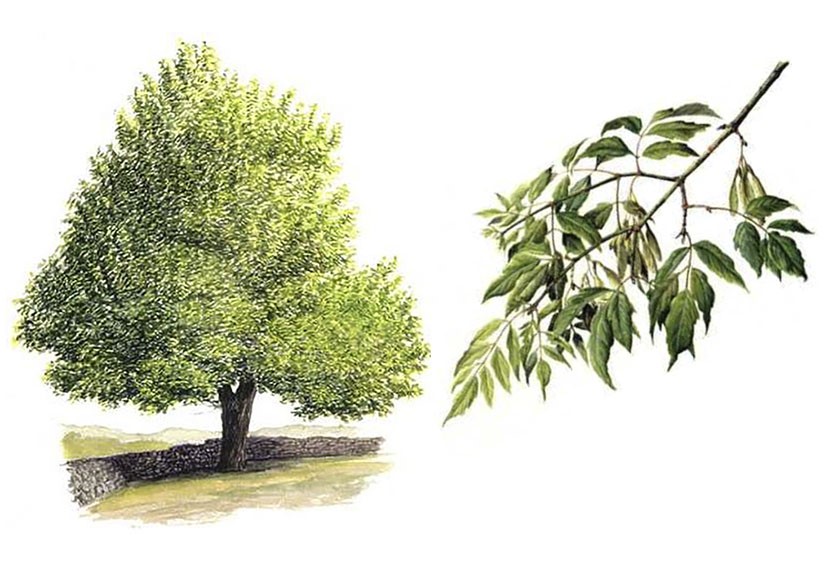
The Boxelder Maple is deciduous meaning that it sheds its leaves in fall. The leaves are compound and come in groups of 3, 5, or 7 with irregular tooths of their leaflets. The leaves are longer than they are wide and are shaped like a tear drop. In the spring and summer, they are a duller green and turn yellow in the fall. The twigs of the tree or a light green and as the tree matures, the twigs turn gray or brown. On the trunk , the bark is grayish tan and have shallow ridges and breaks in it.
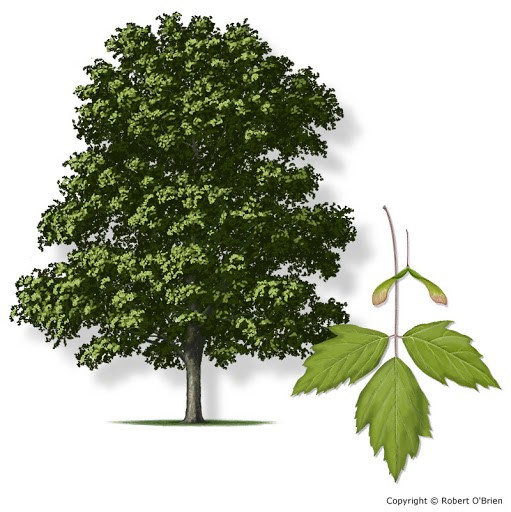
Though most maples are monoecious, the Boxelder Maple is dioecious meaning it has separate trees that produces male and female catkins and flowers. The flowers start growing in the springtime (mid-April to late May) and are yellowish green. They droop down from the twigs with long, thin stems and a small flower at the end. The male flowers hold the pollen that come from multiple protrusions from the flower while the female flower just has two longer pistils. The female flower has a shorter stem and has leaves coming from it. The male and female flower stems can grow a reddish color as they mature. The fruit (seed) of this tree comes in the form of a samara, which is a fused helicopter structure. It emerges as green and turns brown as it matures and dries out. This tree is wind pollinated and this is reflected in its fruit and flowers.
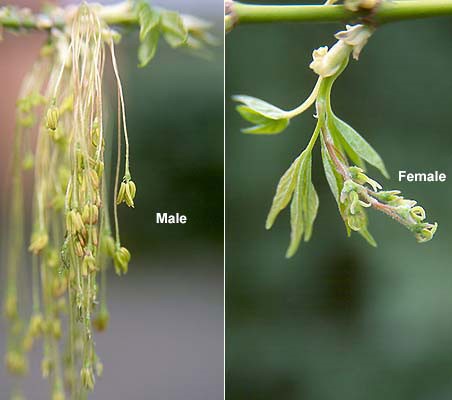
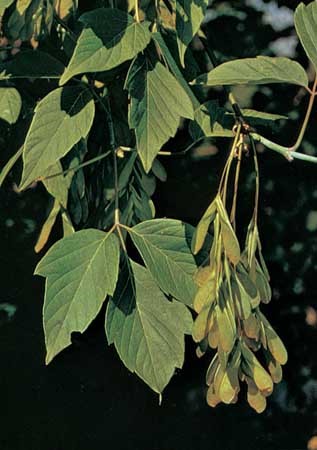
As hinted at by its name, the female trees of this species are attacked by boxelder bugs in mid-summer for the boxelder bug to lay their eggs and eat the fruit.
The Boxelder Maple is known as “adjagobi’mûk” by the Ojibwe. The inner bark was steeped in water and used as a medicine to induce vomiting also known as an emetic. Though its sap is not as prized as that of the Sugar Maple, the sap from the Boxelder Maple’s sap was harvested as an alternative and mixed with the Sugar Maple sap and put in drinks.
This tree is also important in the Dakota tradition. Similarly to the Ojibwe, the Dakota tapped this tree to make syrup and sugar for cooking. The sap of the Boxelder Maple flows even during winter, so this would come in handy when sap supplies from the spring ran low. The wood was also used to make charcoal that was used in ceremonial painting and tattooing.
